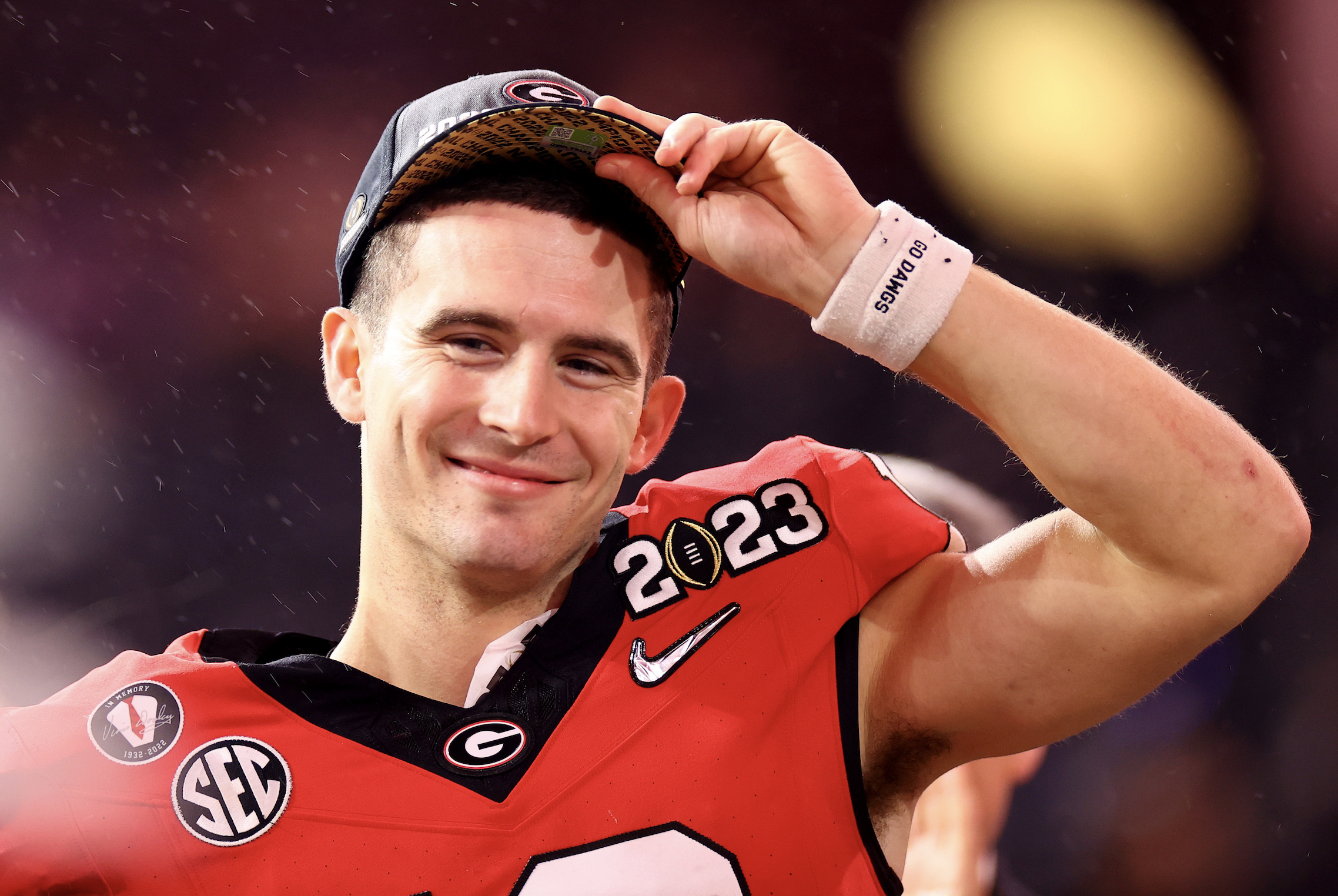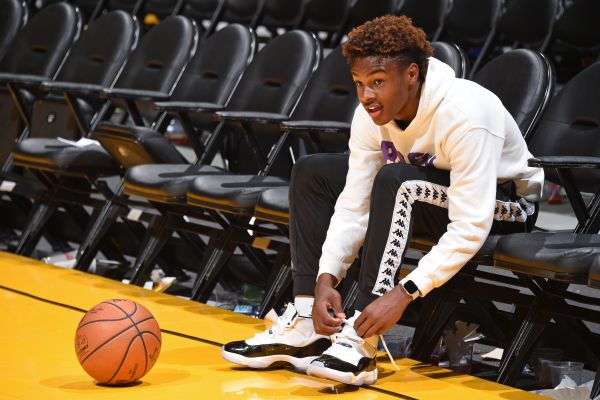Marcus Mariota and Cardale Jones’ NFL Draft decisions, 24 hours apart, exemplified how different their personalities and paths to this stitch in time have been.
The best pure athlete to ever play quarterback for Oregon arrived in 2010 as a redshirt freshman. His name wasn’t Marcus Mariota.
But the lithe 6-3, 215 pound Bryan Bennett had the build and attributes of a more chiseled Mariota and sure moved like him.

Improvised like him.

Bennett even scampered into the end zone with a similar elongated stride that disguised how explosive his speed was.

Bennett was Rivals' 15th ranked prep passer in the Class of 2010. The two-star Mariota was the 12th ranked quarterback in those same rankings in 2011.
After getting edged narrowly in the position battle by a younger Mariota, Bryan Bennett stuck out the 2012 season as a garbage time backup to the future Heisman winner.
Backups are usually the most loved players on a team, but Oregon was backup heaven. Fortunately, Bennett was able to shed the clipboard occasionally as Oregon’s offensive horsepower allowed him plenty of screen time. However, after reading the tea leaves, Bennett transferred to Southeastern Louisiana.
Eight weeks ago, Jones’ career was on track to pan out more like Bennett than Mariota’s as he spent the majority of his sophomore season as freshman JT Barrett's understudy.
After fate intervened and Jones answered the call, he became a household name.
On Wednesday, Mariota released a tepid statement declaring for the draft. On Thursday, Jones staged a media spectacle at his high school alma mater that was MC’d by Ted Ginn Academy Principal Byron Lyons, who was clearly the inspiration for Jay Pharaoh’s Principal Frye.
Ay, @JayPharoah needs to dial up Principle Frye impression to lampoon that Cardale Jones press conf. open. #SNL pic.twitter.com/mxaDx5OMog
— DJ Meta Dunson (@CerebralSportex) January 15, 2015
Lyons’ awkward quoting of Drake’s faddish “Started from the bottom, now we’re here” lyric in his cold opening to Jones' press conference must have meant he believed Jones was going pro, considering that Drake didn’t earn his GED until he was a 25-year-old millionaire.
What Jones does next after rickrolling the media and returning to school is a complex question with multiple choice answers.
Cardale Jones’ predicament between a younger Heisman Trophy candidate and a senior with the same potential is high profile and rare, but not unprecedented.
Jones’ wouldn’t have been the first future first rounder or starter to transfer from a Power 5 program.
Joe Flacco (Pittsburgh to Delaware), Cam Newton (Florida to Blinn College to Auburn), Russell Wilson (NC State to Wisconsin), Nick Foles (Michigan State to Arizona) and Ryan Mallett (Michigan to Arkansas) each found solace and success at second and third homes.
Ohio State’s depth chart is deep, but not much deeper than the 2007 Michigan Spartans trio of Kirk Cousins, Foles and Brian Hoyer.
Hoyer was the starter as a fifth-year senior, ahead of true freshmen Cousins and Foles. Cousins redshirted, Foles burned a year of eligibility backing up Hoyer and after transferred after a brisk zephyr blew Oklahoma quarterback Keith Nichol into Lansing as Cousins’ challenger.
Just when it seemed Jones made it clear that he has no interest in going pro after a holy trinity of games, he released a tweet that was the sports equivalent of the Marvel Phase III rollout. We may not see him in game action for years behind JT Barrett or Miller, but that didn’t quell the fervor over his televised “Decision”
Life changing decision at 4pm
— Cardale Jones (@CJ12_) January 15, 2015
Jones’ personal circumstances seemed to indicate that he was taking a red eye to the NFL.
Growing up in abject poverty, the opportunity to earn millions rather than risk falling out of favor as he potentially sits behind Barrett or sat out a year to transfer was too enticing to pass up.
His marketability and draft stock may never have more momentum than it did today.
Jones lit up the Wisconsin, Alabama and Oregon secondaries with a flurry of spirals, but his entire inventory of skills was on display.
In October against Maryland, Jones went up and over a tackler. On Monday night, Jones plowed through 6-4, 256 pound interior lineman Alex Balducci.
Jones looked more like a Cleveland Browns quarterback than Johnny Manziel or Mariota. It’s fitting that Jones beat the school Manziel spurned as a prep prospect in 2011.
Ohio State’s front seven limited Mariota from rushing off the edges after play-action fakes, forcing him to play from the pocket and resembled the prospect out of Hawaii’s St. Louis High, who was lightly recruited.
For all of his accomplishments within Oregon’s system, talent trumped the machine.
Mariota could barely get his bearings throwing intermediate and deep as Jones slung the ball around with the velocity of marbles in a T-shirt cannon.
Jones’ bionic arm is countered by messy, robotic footwork. Alternatively, Mariota’s feet are his strength. His mechanics are immaculate. However, his ability to process multiple reads will be questioned because of the nature of Oregon’s offense.
When pressured by All-Americans Joey Bosa or Adolphus Washington, he bounced around, but seemed to struggle making multiple reads. His NFL livelihood will depend on him polishing his literacy from the pocket, but it calls into question the projections of him as the No. 1 overall pick. Statistics and aesthetically-pleasing TD-to-INT ratios are great, but are hardly precursors of next level virtuoso quarterbacks.
Ohio State has reassurances that two out of their three beloved quarterbacks will return as Oregon scrambles for its next fixture behind the center.
What should be worrying for the Ducks long-term future is the potential for Mark Helfrich to miss out on the five-stars who are flocking back to USC that Chip Kelly would usually land.
Kelly’s final three recruiting classes ranked 11th (2010), 9th (2011) and 16th (2012) in the nation using Rivals’ rankings. Helfrich’s first two classes have been ranked 22nd and 26th.
Oregon has never been too preoccupied with recruiting rankings, but it’s still a worrisome trend. Ohio State will embark on a 2-peat quest as the No. 1 team in the nation (although ESPN has TCU ranked No. 1 on its Too Early Top 25.)
TCU should hold down the No. 2 spot after getting locked out the playoff like Henry Louis Gates.
Jones sitting behind a system quarterback on a national title team for the next two years isn’t the end of the world either. Over the course of Matt Cassel's four seasons at USC, he dropped back less often than Jones did against Alabama. He sat behind Carsol Palmer and then lost the quarterback battle to Matt Leinart in 2003. Leinart won the Heisman, dated actresses and models while Cassel held the clipboard, experimented at tight end and entered the NFL work force as an undrafted free agent.
Jones is already the same age Cassel was when he received his first NFL paycheck and can always take the Bryan Bennett route through FCS before his senior season — or transfer within the FBS division without sitting out if he earns his degree.
If opinions about Mariota were more mixed than the Brangelina household, Jones thin resume makes him mysterious enough to qualify as an X-File.
The quarterback who thought class was a distraction from college football turning a full-time football job for school is a remarkable turnaround.
“Just because being the first person to graduate, it will open up the floodgates for younger relatives to see that as possible.” Jones elocuted to Sports Illustrated's Pete Thamel.
Bryan Bennett's story isn't a harbinger for Jones. Bennett is further away from the top spotlight than Matthew McConaughey was from an Academy Award in The Wedding Planner, but his skills haven't gone unnoticed as hethrew for 5,522 yards, 39 touchdowns, 19 interceptions, ran for 1,715 yards and another 31 touchdowns in two seasons.
As a senior in 2014, he was nominated as a Walter Payton Award candidate and will likely be drafted despite never taking a snap as an Oregon starter, much less winning three de facto playoff games. Bennett, along with Flacco, Cassel and Foles’ stories are proof that Jones’ NFL dream is taking the scenic route, but the league is waiting for when he’s ready.



